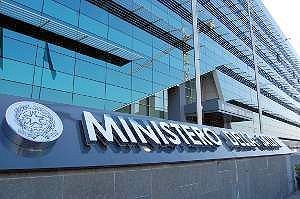
 A large American pharmaceutical company realized that marketing and sales employees had very cold relations with each other. Increasing opportunities for strike up a conversation outside working hours the paradigms of working relationships have changed. The companies in which employees work best, both in quantitative and qualitative terms, are precisely those in which every single member feels at ease and has a good relationship with colleagues.
A large American pharmaceutical company realized that marketing and sales employees had very cold relations with each other. Increasing opportunities for strike up a conversation outside working hours the paradigms of working relationships have changed. The companies in which employees work best, both in quantitative and qualitative terms, are precisely those in which every single member feels at ease and has a good relationship with colleagues.
Lucia Gabani, The Huffington Post, Published:
 21st century HR and emotional intelligence experts agree that a warm and friendly work environment allows workers to work harder and better.
21st century HR and emotional intelligence experts agree that a warm and friendly work environment allows workers to work harder and better.
In offices where colleagues are able to establish friendships, the environment is more productive: problems are solved in less time, the results are better because having more cordial relationships, collaborators are able to be more creative.
Jordi Robert Ribes is the founder of Connecting Perspectives, a team of human resources professionals, told S Fashion of the Spanish newspaper El País that a large American pharmaceutical company realized that marketing and sales employees had very cold relations with each other. The company then proceeded reducing the number of coffee machines: instead of one machine every six workers, one every 150 was installed. At that point if workers of the two different sectors had not met outside working hours, they would have had, between one coffee and another, an opportunity to strike up a conversation.
 The paradigms of working relationships have changed: if in the past competitiveness was a stimulus to bring out the best in every worker, today the keyword is collaboration. The companies in which employees work best, both in quantitative and qualitative terms, are precisely those in which every single member feels at ease and has a good relationship with colleagues.
The paradigms of working relationships have changed: if in the past competitiveness was a stimulus to bring out the best in every worker, today the keyword is collaboration. The companies in which employees work best, both in quantitative and qualitative terms, are precisely those in which every single member feels at ease and has a good relationship with colleagues.
Doctor Robert-Ribes he explained why: “each of us sees the world through a filter, this means that we miss many things. Therefore, it is essential to talk to others and share one's experiences and points of view outside our comfort zone”.
The reporter of S Fashion of El País reported the stories of two workers who can confirm what Dr. Robert-Ribes claimed:
Elena (the name is fictitious) is 43 years old and has two children, but a few months ago she realized she had a serious problem: an excessive dose of stress deriving mainly from her job. As she herself says, she is going through a very delicate personal moment, but when asked why she doesn't leave her job, the answer is surprising: "I am facing a very difficult moment, the environment and the network of friendships that I have created with the group of colleagues it gives me a lot of strength. I'm afraid leaving doesn't offer me the same support and trust I've built in here over so many years."
 On the contrary, Miguel is a guy who loves his job but preferred to leave it precisely because relations with colleagues had become too tense: "I had a prestigious, comfortable and secure role but I preferred to leave it because the relationship with colleagues had become unsustainable. There was no trust, the environment was very competitive, I isolated myself and totally lost motivation”.
On the contrary, Miguel is a guy who loves his job but preferred to leave it precisely because relations with colleagues had become too tense: "I had a prestigious, comfortable and secure role but I preferred to leave it because the relationship with colleagues had become unsustainable. There was no trust, the environment was very competitive, I isolated myself and totally lost motivation”.
However, the real driver of innovation, retention of talent and an emotional connection between employees and society is a new concept, he said building bridges, bridge construction, a strategy gradually introduced into organizations. It is a technique to promote bonds of cooperation and friendship between employees of different departments in order to find approaches and proposals that facilitate interaction. In addition to improving corporate profits, this methodology supports the idea that workers' emotional well-being and their relationship trust.





